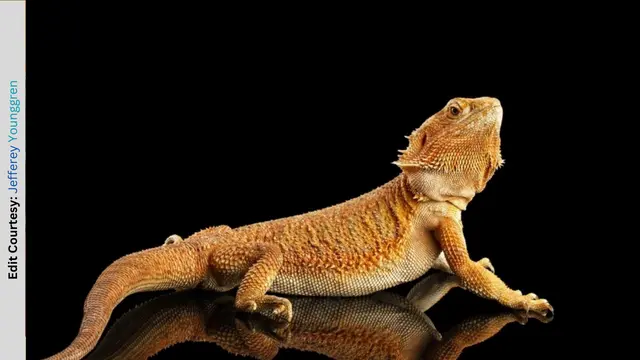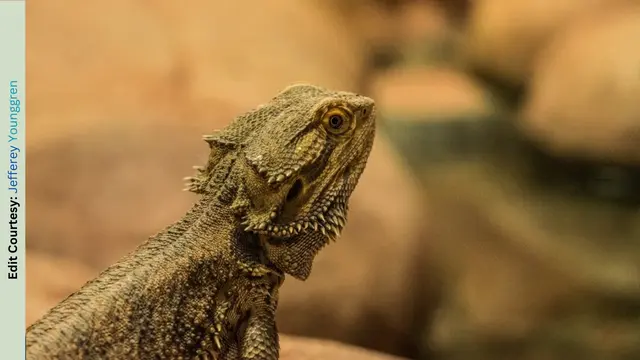Welcome to the ultimate guide to breeding bearded dragons.
This comprehensive guide is designed to provide you with detailed instructions on how to successfully breed bearded dragons.
We will cover everything from pre-breeding preparations and selecting healthy breeding pairs to caring for gravid females and incubating eggs.
Pre-Breeding Preparations

Before you start breeding bearded dragons, it’s crucial to ensure that you have the proper knowledge, resources, and environment in place.
Here are some key steps to prepare for breeding:
- Research: Familiarize yourself with bearded dragon care, breeding techniques, and potential health concerns.
- Space: Ensure you have adequate space for the breeding pair and potential offspring.
- Housing: Separate enclosures are recommended for male and female bearded dragons to prevent overbreeding and stress.
- Health: Conduct regular health checks on both male and female dragons, ensuring they are in optimal condition for breeding.
Selecting and Pairing Bearded Dragons
To achieve successful breeding, you must carefully select healthy and genetically compatible bearded dragons.
Here are some tips on selecting and pairing your dragons:
- Age: Choose bearded dragons that are at least 18 months old, as younger dragons are not sexually mature.
- Size: Select dragons that are similar in size, as larger males can injure smaller females.
- Genetics: Avoid inbreeding by selecting unrelated dragons and researching their genetic backgrounds.
- Health: Ensure both dragons are healthy, with no signs of disease or parasites.
The Breeding Process
Once you’ve selected a suitable pair of bearded dragons, it’s time to introduce them for breeding.
Follow these steps for a successful breeding process:
- Introduce: Place the female in the male’s enclosure, but monitor their interactions closely to ensure the female is not overly stressed.
- Courtship: The male will initiate courtship by bobbing his head, inflating his beard, and possibly stamping his feet.
- Mating: If the female is receptive, she will allow the male to mount her and copulate. This process can take several minutes.
- Separation: After mating, separate the pair to prevent overbreeding and stress.
Monitoring and Ensuring Successful Mating

To ensure the optimal outcome of the mating process between two dragons, it is crucial to maintain a vigilant watch and take note of specific behavioral indicators.
The following signs can offer valuable insight into the success of the mating process:
Copulation:
One of the primary indicators of successful mating is the observation of the male dragon mounting the female.
During copulation, the male will position himself on top of the female, aligning their cloacal vents to facilitate the transfer of sperm.
This act may occur multiple times within a short period to increase the chances of successful fertilization.
Female receptiveness:
A critical aspect of successful mating is the female dragon’s receptiveness to the male’s advances.
Signs of a receptive female include the flattening of her body, lifting of her tail, and submissive postures, which facilitate the male’s access to her cloaca for copulation.
A non-receptive female may exhibit aggressive or evasive behaviors, which can lead to injury or unsuccessful mating attempts.
Courtship behaviors:
In some dragon species, the male may engage in courtship rituals or displays to attract the female’s attention and gain her acceptance.
These behaviors may include head-bobbing, nuzzling, or elaborate aerial displays.
Observing successful courtship can indicate that the female is more likely to be receptive to the male’s mating attempts.
Post-copulatory behaviors:
After copulation, both dragons may exhibit specific post-mating behaviors, which can serve as additional indicators of successful mating.
The female may become more docile and less interested in the male’s advances, while the male may become less aggressive or territorial.
In some species, the female may also engage in nest-building or egg-laying behaviors shortly after mating.
Health monitoring:
Ensuring the health and well-being of both dragons throughout the mating process is essential.
Monitor each dragon for signs of stress, injury, or illness, as these factors can negatively impact the success of mating.
Regular veterinary examinations may be necessary to address any health concerns and provide appropriate interventions if needed.
Caring for the Gravid Female

Nutrition and Supplements
Increase calcium and vitamin D3 supplements to support the gravid female’s health and egg production. Provide a diverse and nutrient-rich diet, including insects, greens, and vegetables.
Egg-Laying Site
Provide a suitable egg-laying site within the enclosure, such as a nesting box filled with a damp, substrate mix.
Monitor the female’s behavior, as she will often dig test burrows before selecting the perfect location.
Post-Oviposition Care
After laying eggs, the female may appear weak and dehydrated. Provide ample hydration and nutrition to aid in her recovery.
Incubating Bearded Dragon Eggs
Egg Collection and Preparation
Carefully collect the eggs from the nesting site, ensuring they remain in the same orientation as they were laid.
Mark the top of each egg with a non-toxic marker to maintain proper positioning throughout incubation.
Incubation Setup
Place the eggs in a sealed container with a moist incubation medium, such as vermiculite or perlite, at a 1:1 ratio of water to medium by weight.
Ensure the medium’s consistency is damp but not wet.
Temperature and Humidity
Maintain a consistent incubation temperature between 82°F to 86°F (27.7°C to 30°C) and humidity levels between 70% to 80%.
Slightly adjust the temperature to influence the hatchlings’ sex, with higher temperatures producing more females and lower temperatures more males.
Raising Bearded Dragon Hatchlings
Hatchling Enclosure
Prepare a separate enclosure for the hatchlings with appropriate heating, lighting, and hiding spots.
Use a non-particulate substrate, such as paper towels or reptile carpet, to minimize the risk of impaction.
Nutrition
Offer finely chopped vegetables and appropriately-sized insects, dusted with calcium and vitamin D3 supplements, to the hatchlings.
Gradually introduce a variety of foods as they grow.
Monitoring Growth and Health
Monitor the hatchlings’ growth, behavior, and overall health.
Schedule regular check-ups with a reptile veterinarian to ensure proper care and address any concerns.
Conclusion
Breeding bearded dragons requires careful planning, attention to detail, and a commitment to providing the best care possible.
By closely following these guidelines and maintaining a clean, healthy environment, you can successfully breed and raise thriving bearded dragons.
